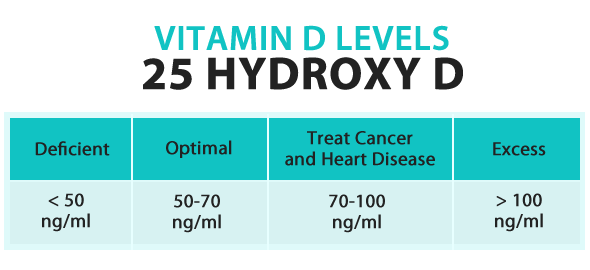Even Low Dose Vitamin D Slashes Flu Risk by Nearly Half

Vitamin D3, even when taken in low daily dosages, has been found to slash your risk of developing the flu by 42%. If optimal ranges of vitamin D intake were utilized, the percentage would most likely climb much higher.
While conducting the study, Mitsuyoshi Urashima and colleagues at the Jikei University School of Medicine in Tokyo administered only 1,200 IU of vitamin D daily to study participants. The researchers examined 430 children between the ages of 6 and 15 between December 2008 and March 2009. Half of the participants received vitamin D3 and the other half received a placebo.
Simply Taking Vitamin D3 Helps Tackle All Serious Flu Epidemics
At a dosage of 1,200 IUs per day, 334 of the children fully completed the study. In order to diagnose the presence of influenza Types A and B, researchers used nose and throat swabs on both groups. What they found was that only 18 of the children taking vitamin D3 were infected with influenza Type A, while the number rose to 31 in the placebo group.
The difference between the two groups regarding infection rates indicates a 42% decreased risk of developing the flu simply by taking vitamin D3. Interestingly, Type A influenza includes all serious flu epidemics, including seasonal flus and even the swine flu.
So if 1,200 IUs per day is low, what is the optimal daily dosage of vitamin D?
Amazingly, the children in the study are actually taking 1,300 IUs less than what is recommended to children by Canada’s Public Health Agency. According to the organization, children between the ages of 5 and 10 should be taking 2,500 IUs per day. In addition, the guidelines state that adults should be taking 5,000 IUs daily. Therefore, 1,200 IUs is not even adequate for young children.
It is important to keep in mind that these are typical standardized doses, and only through a blood test will you be able to properly analyze your vitamin D levels. The correct test you should receive is 25(OH)D, also called 25-hydroxyvitamin D. You will want to ensure that you are in the optimal vitamin D level range. The optimal range is 50-70 ng/ml, though anything over 100 is in excess. In contrast, 50 ng/ml or below is in the deficient range.
Here is an image to summarize the ranges:
 Vitamin D supplementation is a simple method of slashing your flu risk and improving overall health. I encourage you to receive a blood test, which can be done through your general doctor, and optimize your vitamin D levels.
Vitamin D supplementation is a simple method of slashing your flu risk and improving overall health. I encourage you to receive a blood test, which can be done through your general doctor, and optimize your vitamin D levels.

i have sent emails to the different supplement companies who sell Vitamin D3 including the liquid form asking them questions about their supplements. while the less expensive vitamin d3 softgels have high ratings, one would think the whole foods vitamin d3 or raw version would be the better choices vs. the cheaper ones sourced from sheep's lanolin. based on your emphasis of the importance of vitamin d supplementation, which brand of vitamin d3 do you recommend with confidence and why? part of me would prefer to go with the less expensive brand with several positive ratings than with the more expensive brands with few to no ratings. sometimes you do get what you pay for, yet sometimes i wonder if i am being duped purchasing the more expensive suppelment brands.
thanks for any information or knowledge you can share!
Near a Whole Foods? I take their brand….
I was very deficient 2 yrs ago, usually take 5000 IU, now, last 3 months, doubled due to Flu season…
Try Youngevity’s “Osteo FX.” It’s straight from minerals in Utah. Absolutely amazing. Check out their nutrition facts online. I’ve never felt better!
Low dose my arse.
The study gave 6 (SIX) TIMES the daily child dose.
1000IU is a daily adult dose.